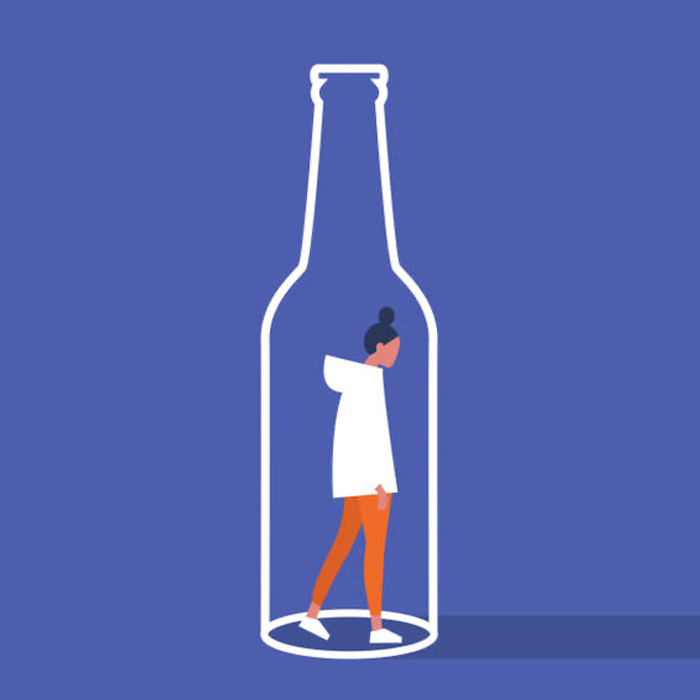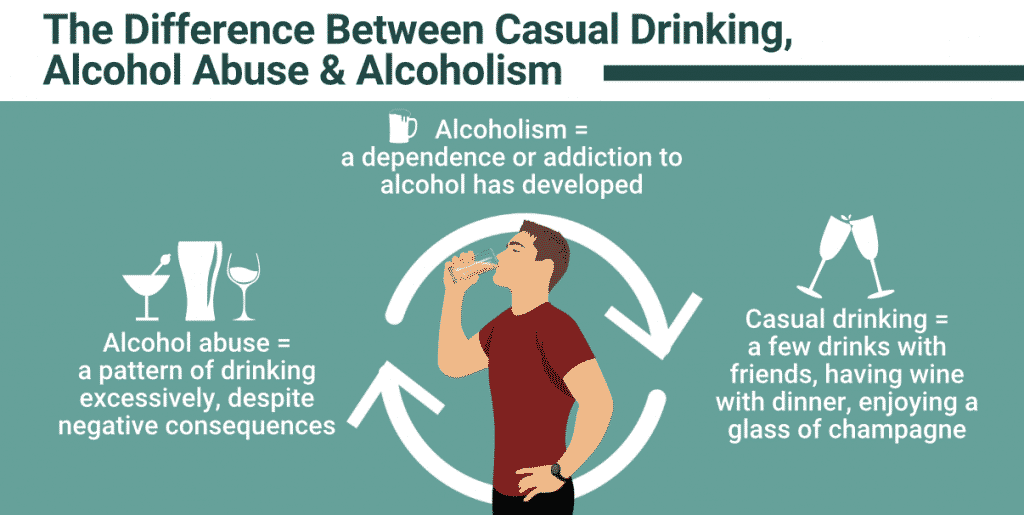Outpatient Alcohol Treatment
Outpatient Alcohol Detox Programs
We offer Outpatient Alcohol Detox Programs in Agoura Hills, California and the surrounding areas, including Woodland Hills, Calabasas, Thousand Oaks, Santa Barbara, Sherman Oaks, Ventura, Encino, Oxnard, Studio City, Tarzana, Westlake Village, and Beverly Hills.
Our program begins with our acclaimed drug and alcohol treatment with a process known as medical detox or alcohol detox, which cleanses the body of addictive chemicals and toxins in a safe, comfortable manner.
This innovative approach treats alcoholism and addiction as diseases of the body and mind. We’ll work tirelessly with you to identify root causes that created your alcoholism, and also methods of combating your normal triggers. In almost no time, you’ll have the tools and resources necessary to live a happy, productive life free from alcoholism.

Information on
Alcoholism
Alcoholism, also known as alcohol dependence, is a chronic disease in which your body becomes dependent on alcohol. When you have alcoholism, you lose control over your drinking. You may not be able to control when you drink, how much you drink, or how long you drink on each occasion.
Alcohol addiction, the physical dependence to alcohol occurs gradually. Over time, drinking too much changes the chemical balance in your brain associated with the pleasurable aspects of drinking alcohol. Excessive, long-term drinking can affect the balance of these chemicals, causing your body to crave alcohol to restore good feelings or to avoid negative feelings.
Alcoholism includes the following four symptoms:
- Cravings, which is a strong urge or need to drink. Cravings for alcohol can be as strong as the need for food or water.
- Loss of Control, which is not being able to stop drinking. An alcoholic will continue to drink despite serious family, health, or legal problems.
- Physical dependence, which produces withdrawral syptoms such as sweating, shaking, nausea, and anxiety.
- Tolerance, which is the need to drink more to get the same effect.
Research shows that the risk for developing alcoholism does indeed run in families. The genes a person inherits partially explain this pattern, but lifestyle is also a factor. Your social life and the people you socialize with, the amount of stress in your life, and how readily available alcohol is also are factors that may increase your risk for alcoholism.
Research shows us that alcohol abuse is rising. Around 1 out of 6 people in the United States have some degree of a problem with alcohol.
Researchers are working to discover the actual genes that put people at risk for alcoholism.
Symptoms of Alcoholism
There are many signs and symptoms related to drinking problems. Alcoholism is considered a progressive disease, meaning that the symptoms and effects of drinking alcohol become increasingly more severe over time. People who abuse alcohol may begin to show early signs of a problem. If they continue to drink, then the symptoms progress to showing severe warning signs of alcohol abuse, alcohol dependence or alcoholism.
This description of alcoholism helps us understand why most alcoholics can’t just “use a little willpower” to stop drinking. There is frequently a powerful craving for alcohol, a need that can feel as strong as the need for food, water and survival.
People who have alcoholism or alcohol abuse often experience:
- Being unable to limit the amount of alcohol you drink
- Feeling a strong need or compulsion to drink
- Developing tolerance to alcohol so that you need an increasing amounts to feel its effects
- Having legal problems or problems with relationships, employment or finances due to drinking
- Drinking alone or in secret
- Not remembering conversations or commitments, sometimes referred to as “blacking out”
- Making a ritual of having drinks at certain times and becoming annoyed when this ritual is disturbed or questioned
- Losing interest in activities and hobbies that used to bring you pleasure
- Irritability when your usual drinking time nears, especially if alcohol isn’t available
- Keeping alcohol in unlikely places at home, at work or in your car
- Gulping drinks, ordering doubles, becoming intoxicated intentionally to feel good or drinking to feel “normal”
- Experience personality changes and can become hostile or violent when drinking
- Neglect physical appearance
- Neglect to eat or eat poorly
- Miss work or school or other commitments
Physical symptoms of alcohol dependence and alcoholism include:
- Experiencing physical withdrawal symptoms — such as nausea, sweating and shaking — when you don’t drink
- Memory lapses after heavy drinking
- Needing more and more alcohol to feel “drunk”
- Alcohol-related illnesses such as alcoholic liver disease

Causes of Alcoholism
The National Council on Alcoholism and Drug Dependence states:
“Alcoholism is a primary chronic disease withgenetic, psychosocial and environmental factors influencing its development and manifestations. The disease is often progressive and fatal. It is characterized by impaired control over drinking, preoccupation with the drug…use of alcohol despite adverse consequences and distortions in thinking, mostly denial. Each of these symptoms may be continuous or episodic.”
The causes of Alcoholism are difficult to pinpoint. Alcohol abuse and alcoholism cut across gender, race, and nationality. In the United States, 17.6 million people–about l in every 12 adults–abuse alcohol or are alcohol dependent. In general, more men than women are alcohol dependent or have alcohol problems. And alcohol problems are highest among young adults ages 18-29 and lowest among adults ages 65 and older. We also know that people who start drinking at an early age–for example, at age 14 or younger–are at much higher risk of developing alcohol problems at some point in their lives compared to someone who starts drinking at age 21 or after.
Treatment of Alcoholism
Alcoholism can be treated and managed. Alcoholism treatment programs use both counseling and medications to help a person stop drinking. Treatment has helped many people stop drinking and rebuild their lives.
Patients receiving outpatient detoxification treatment usually are expected to travel to a treatment facility for treatment sessions.
- Treatment for alcoholism may begin with a program of detoxification. You may need to take sedating medications to prevent shaking, confusion or hallucination (delirium tremens) or other withdrawal symptoms.
- Oral medications. An alcohol-sensitizing drug called disulfiram (Antabuse) may help prevent you from drinking. Disulfiram won’t cure alcoholism, nor can it remove the compulsion to drink. But if you drink alcohol, the drug produces a physical reaction that includes flushing, nausea, vomiting and headaches. Naltrexone (ReVia), a drug long known to block the good feelings alcohol causes, reduces the urge to drink. Acamprosate (Campral) may help you combat alcohol cravings. Unlike disulfiram, naltrexone and acamprosate don’t make you feel sick soon after taking a drink.
- Injected medication. Vivitrol, a version of the drug naltrexone, is injected once a month by a health care professional. Although similar medication can be taken in pill form, the injectable version of the drug may be easier for people recovering from alcohol dependence to use consistently.
- Alcoholism sometimes occurs along with other mental health disorders. You may need psychological counseling (psychotherapy), medications, or other treatment for depression, anxiety or another mental health condition. Counseling and therapy for groups and individuals support recovery from the psychological aspects of alcoholism. You may benefit from couples or family therapy — family support can be an important part of the recovery process.
- Learning skills and establishing a treatment plan. This usually involves alcohol-abuse specialists. It may include goal setting, behavior modification techniques, use of self-help manuals, counseling and follow-up care at a treatment center.
- Continuing support. Aftercare programs and support groups help people recovering from alcoholism or alcohol abuse to stop drinking, manage relapses and cope with necessary lifestyle changes. This may include medical or psychological care or attending a support group such as Alcoholics Anonymous.
- Medical treatment for other conditions. Common medical problems related to alcoholism are high blood pressure, increased blood sugar, liver disease and heart disease.
Advantages of Outpatient Detoxification
For patients with mild-to-moderate alcohol withdrawal syndrome, characterized by symptoms such as hand tremor, perspiration, heart palpitation, restlessness, loss of appetite, nausea, and vomiting, outpatient detoxification is as safe and effective as inpatient detoxification and it is much less time consuming and costs less than inpatient detox. The patient can also continue to functionrelatively normally and maintain employment as well as family and social relationships.